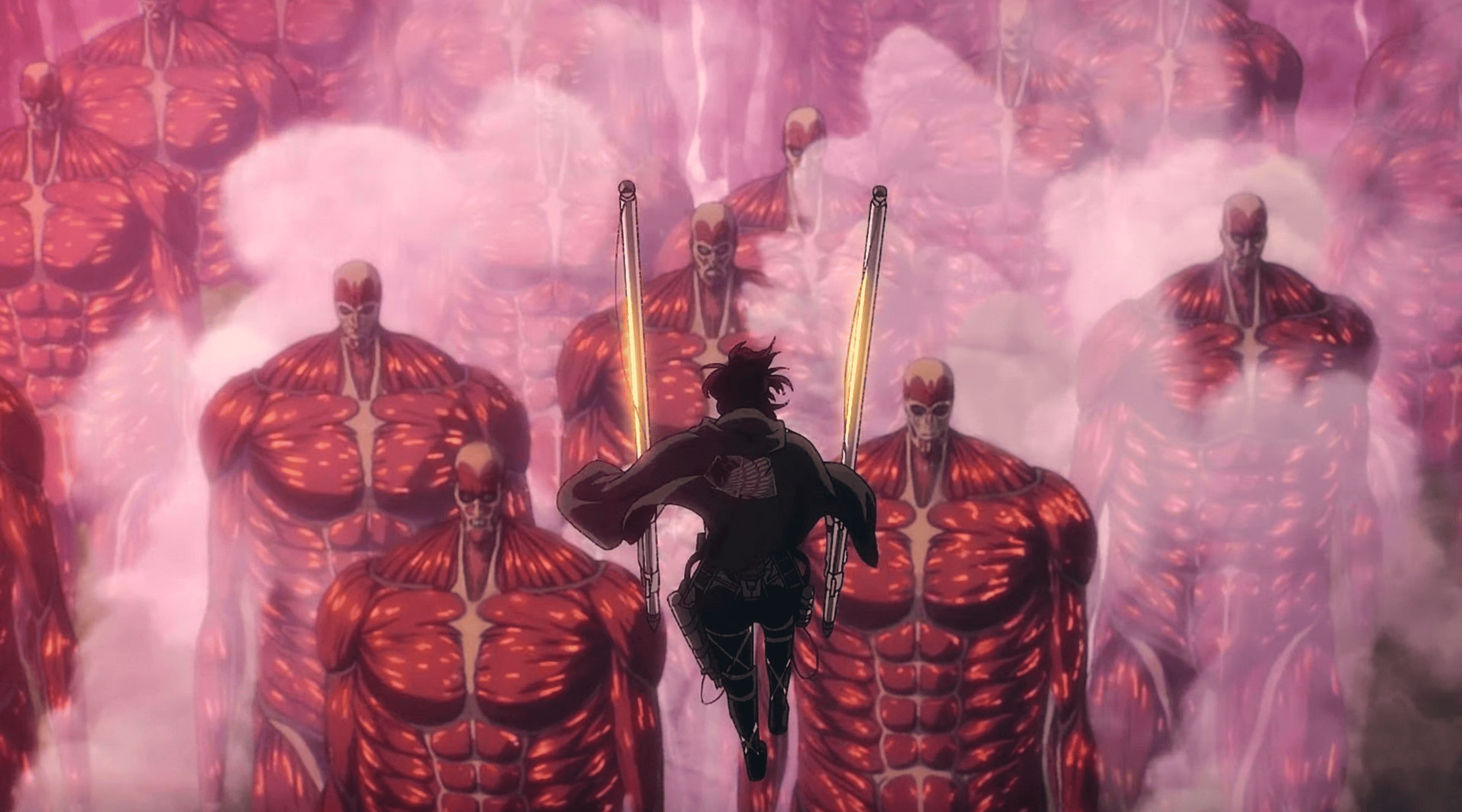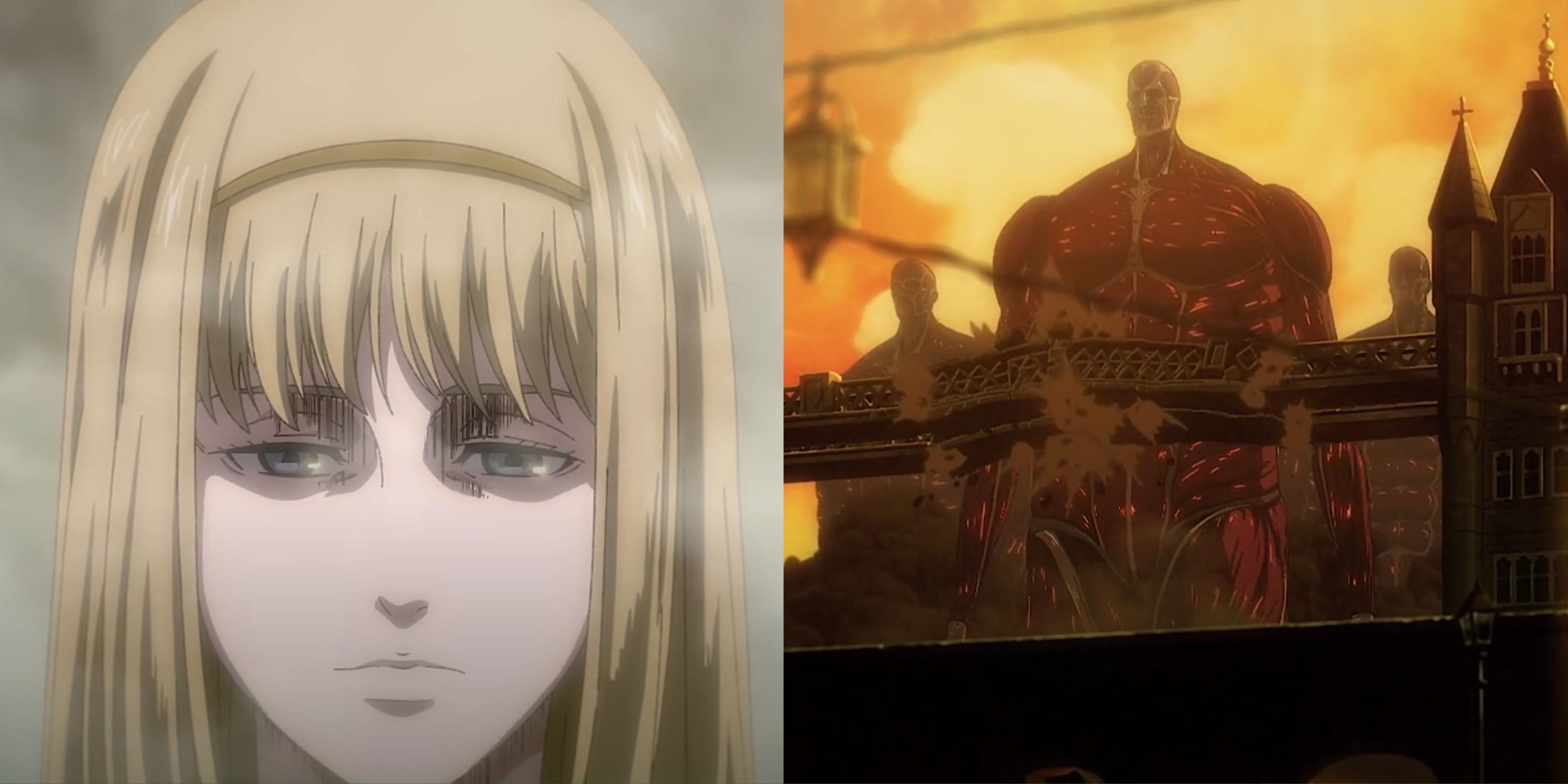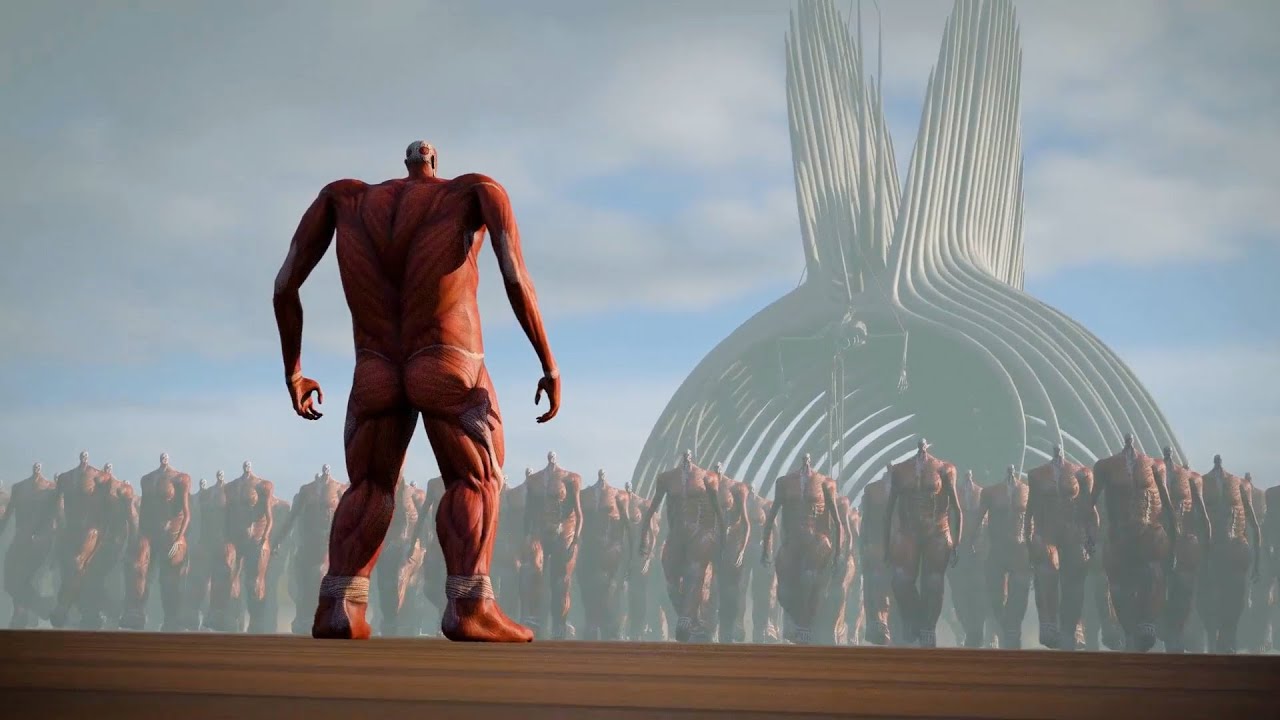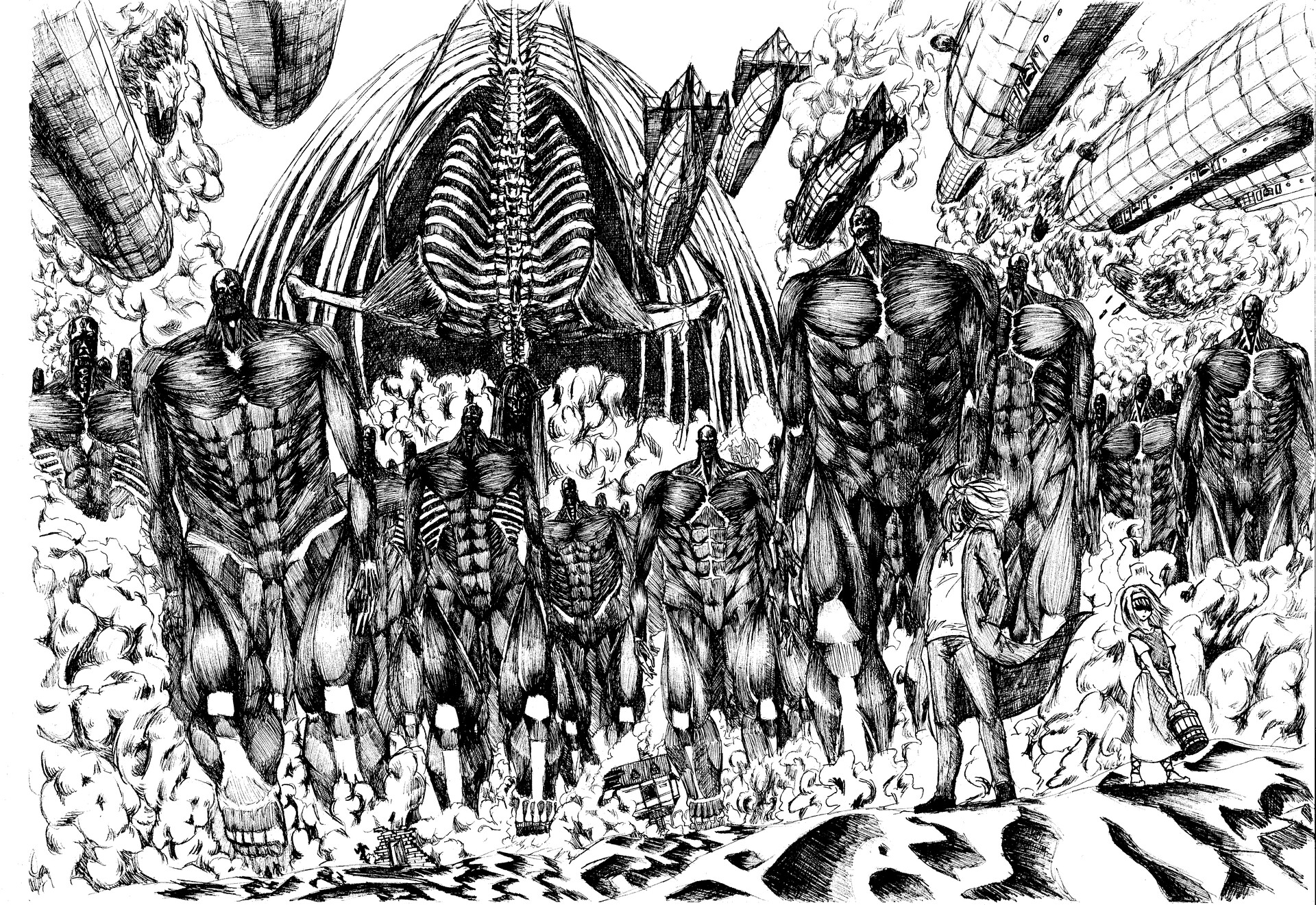The Rumbling is a pivotal event in the "Attack on Titan" series, igniting intense discussions among fans. It marks a dramatic turning point where the fate of humanity hangs in the balance. But what exactly is the Rumbling? In simple terms, it involves unleashing the Colossal Titans trapped within the walls to march across the world. This act represents a desperate gamble by the Eldians to secure their survival against external threats. Let’s delve deeper into this monumental event and its implications!
Overview of Titans in Attack on Titan

In "Attack on Titan," Titans are not just monstrous beings; they symbolize deeper themes like fear, freedom, and the consequences of power. Here’s a breakdown of the different types of Titans featured in the series:
- Pure Titans: These are mindless giants, typically humans transformed into Titans. They lack intelligence and are driven by instinct.
- Shifter Titans: Unlike Pure Titans, these possess human intelligence and can transform back into their human forms. Notable examples include:
- Attack Titan: Held by Eren Yeager, this Titan is known for its fighting spirit and unique power to access memories of past inheritors.
- Colossal Titan: The massive Titan that initially breaches Wall Maria, it stands at an impressive 60 meters tall and can emit steam.
- Armored Titan: This Titan, controlled by Reiner Braun, is distinguished by its hard, armor-like skin, making it a formidable opponent.
- Nine Titans: There are nine unique Titan powers, each with distinct abilities, including the Female Titan (Annie Leonhart) and the Beast Titan (Zeke Yeager).
Understanding these Titans is crucial for grasping the complexities of the Rumbling. The colossal Titans at the heart of this event embody the destructive potential of the world’s fear and the lengths to which the characters will go to protect their people. Each Titan has its backstory, adding richness to the narrative and illustrating the burden of power.
In subsequent sections, we’ll explore the implications of the Rumbling and how each Titan plays a role in this epic climax of the series. Stay tuned as we unravel the mysteries behind these awe-inspiring beings!
Also Read This: What Is Super Rumble on Instagram Reddit? Explaining the Instagram Trend
3. Detailed Breakdown of Each Titan in the Rumbling

The Rumbling brought a massive wave of Titans marching across the landscape, each one a towering avatar of destruction. Let’s take a closer look at some of the most significant Titans featured during this catastrophic event.
- Founding Titan: The most powerful of them all, the Founding Titan is central to the Rumbling. Possessing the ability to control other Titans, it holds the key to the fate of Eldians and Marleyans alike. This Titan is represented by Eren Yeager in his final form, showcasing immense strength and a massive skeletal structure.
- Colossal Titan: Known for its incredible size and destructive abilities, the Colossal Titan is a sight to behold. When it first appeared in the series, it caused widespread havoc, and during the Rumbling, it trampled anything in its path. This Titan symbolizes the overwhelming power of nature, leaving devastation in its wake.
- Armored Titan: While initially a formidable presence, the Armored Titan—Bertolt’s transformation—played a significant role in the battle strategy during the Rumbling. Its hardened skin allows it to withstand attacks, making it a pivotal defensive force amidst the onslaught.
- Female Titan: Represented by Annie Leonhart, the Female Titan brings agility and combat prowess to the battlefield. Her ability to attract pure Titans makes her a unique player in the Rumbling narrative, showcasing strategic depth and the complexities of Titan powers.
- Beast Titan: Zeke Yeager’s Beast Titan is not just about brute strength; it’s also about tactical intelligence. With the ability to throw projectiles with incredible accuracy and command other Titans, the Beast Titan adds a layer of strategy to the Rumbling, making it a key player in the unfolding chaos.
- Jaw Titan: The Jaw Titan, known for its fierce speed and agility, plays a critical role in the Rumbling’s chaotic battlefield. Its ability to inflict serious damage quickly makes it a dangerous foe, capable of taking down opponents with swift attacks.
These Titans, each with their unique abilities and characteristics, combine to create a terrifying force during the Rumbling, showcasing the complex nature of their powers and the impact they have on the world around them.
Also Read This: Can You Play My Hero Ultra Rumble on PS5? How to Access the Game
4. Key Facts About the Rumbling Titans

The Rumbling isn't just about the chaos and destruction; it’s also rich in lore and significance. Here are some essential facts that help to understand these titanic beings:
| Fact | Description |
|---|---|
| Origin: | The Titans in the Rumbling trace their origins back to Ymir Fritz, the progenitor of all Titans, whose powers were divided among her descendants. |
| Control Mechanism: | Eren Yeager, as the Founding Titan, has the ability to control the Rumbling Titans, directing their path and actions, which adds a significant layer of strategy to the unfolding events. |
| Scale of Destruction: | The sheer number of Titans participating in the Rumbling, estimated in the hundreds of thousands, demonstrates the overwhelming force of this event and its implications for the world. |
| Moral Dilemma: | The Rumbling raises profound ethical questions about survival, freedom, and the lengths to which one might go to protect their people, making it a critical turning point in the series. |
| Environmental Impact: | The Titans' march not only destroys human life but also devastates the environment, symbolizing humanity's struggle against nature and the consequences of war. |
These facts not only highlight the Titans’ destructive capabilities but also the rich thematic depth of the narrative surrounding the Rumbling. It’s a blend of action, morality, and the consequences of power that leaves a lasting impact on fans and the world of the series.
Also Read This: Where Can I Watch the Greatest Royal Rumble
5. Impact of the Titans on the Storyline

The impact of the Titans in "Attack on Titan" is profound and multifaceted. From the very beginning, these colossal beings have shaped the narrative, influencing character development, themes, and the pacing of the story. Titans are not just monsters; they symbolize humanity's struggle against overwhelming odds. They represent the fear of the unknown, the consequences of power, and the darker aspects of human nature.
For instance, when the Colossal Titan first breaches Wall Maria, it sets off a chain reaction of events that lead to Eren Yeager's transformation into a Titan shifter. This pivotal moment reveals the Titans as both a physical threat and a catalyst for character evolution. Eren's journey from a terrified soldier to a determined leader embodies the essence of growth fueled by adversity.
Moreover, the Titans serve as a narrative device that challenges the protagonists’ morals. Take Reiner Braun, the Armored Titan, for example. His dual identity as a warrior and a soldier presents complex questions about loyalty, betrayal, and the nature of conflict. Through characters like Reiner, the series explores themes of identity and the personal struggles that arise in a world torn apart by war.
Additionally, the Rumbling—a cataclysmic event unleashed by the Founding Titan—epitomizes the Titans' influence on the storyline. It forces characters to confront the consequences of their actions and the moral implications of their choices. The Rumbling is not just a physical phenomenon; it represents the culmination of years of conflict, showcasing how deeply woven the Titans are into the fabric of the narrative.
In conclusion, the Titans in "Attack on Titan" are much more than mere antagonists. They are integral to the storyline, driving character arcs and thematic exploration. With every encounter, the Titans compel characters and viewers alike to wrestle with complex questions about humanity, morality, and the fight for survival.
6. Fan Theories and Discussions
The world of "Attack on Titan" is rich with speculation, and fan theories have flourished alongside the series. As we delve into these discussions, we uncover diverse interpretations that deepen our understanding of the story's intricate layers.
One popular theory revolves around the origins of the Titans themselves. Many fans speculate that the Titans are a result of a curse or a failed experiment. Some suggest that the Eldians, cursed by their ancestors' sins, became Titans as a form of punishment for their actions. This theory sparks conversations about the cyclical nature of violence and the possibility of redemption.
Another fascinating discussion focuses on the motivations behind Eren's actions in the latter parts of the series. Some fans argue that Eren embodies a tragic hero archetype, motivated by love and desperation to protect his friends and homeland. Others believe he represents a darker path, showcasing the corrupting influence of power and the moral complexities of freedom. This debate highlights the duality of Eren's character and invites viewers to reflect on their own interpretations.
Moreover, theories surrounding the Founding Titan, Ymir Fritz, and the nature of the Titans reveal the depth of fan engagement. Many fans speculate about her true intentions and whether she seeks liberation or vengeance. The discussions about Ymir often lead to explorations of themes such as sacrifice, autonomy, and the consequences of one's choices.
- The Origin Theory: Explorations on whether the Titans are a punishment or a result of ancient curses.
- Eren’s Duality: Debates on Eren's motivations—heroic versus tyrannical.
- Ymir's Intentions: Discussions on Ymir Fritz's role and the implications of her decisions.
Ultimately, these fan theories and discussions not only showcase the creativity and passion of the "Attack on Titan" community but also illustrate how a well-crafted narrative can inspire profound engagement. Each theory adds a new layer to our understanding, making the journey through the series even more thrilling.
 admin
admin








